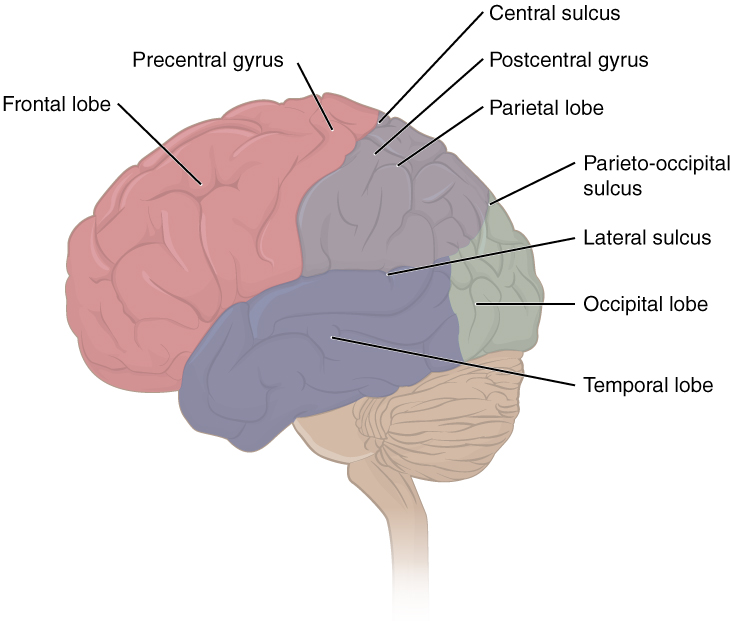Playlist
Show Playlist
Hide Playlist
Parietal Lobe
-
Slides 17 CerebralCortex BrainAndNervousSystem.pdf
-
Reference List Anatomy.pdf
-
Download Lecture Overview
00:00 Now that you have a better understanding of the frontal lobe, the various cortices within it, the various functions of those cortices and lesions, now let’s do the same with the parietal lobe. The parietal lobe has a primary somatosensory cortex that lies on the postcentral gyrus. That is shown right in through here in this darker blue area. So the central sulcus then separates the primary motor area in the precentral sulcus or gyrus from the primary somatosensory cortex on the postcentral gyrus. There is a little man or homunculus associated with it that looks very similar to the one on the precentral gyrus but for simplicity, that is not shown in the illustration. The primary somatosensory cortex is the cortical area that’s going to receive somatosensory input from the opposite side. So this sense is the left primary somatosensory cortex. The sensory input is coming from the right side of the body. 01:19 A lesion here would result in contralateral anesthesia, so we would not be able to have a good sense of the senses coming from the right side if this is the left as it is. Another area or cortical area of the parietal lobe is the parietal association area that is shown in through here. 01:45 This is involved functionally in stereognosis. It also helps us to maintain an awareness of our contralateral self and our surroundings. A lesion of this particular area can result in astereognosis. Also, it can cause us to neglect our contralateral self and our surroundings. This is another area that can result in apraxia.
About the Lecture
The lecture Parietal Lobe by Craig Canby, PhD is from the course Cerebral Cortex.
Included Quiz Questions
Which of the following is separated from the primary somatosensory cortex by the central sulcus?
- Primary motor cortex
- Posterior parietal cortex
- Premotor cortex
- Supplementary motor cortex
- Dorsolateral prefrontal cortex
Which of the following effects would occur if a person had a lesion in the parietal association?
- Hemispatial neglect
- Disconnect syndrome
- Parinaud’s syndrome
- Hemiballismus
Customer reviews
5,0 of 5 stars
| 5 Stars |
|
1 |
| 4 Stars |
|
0 |
| 3 Stars |
|
0 |
| 2 Stars |
|
0 |
| 1 Star |
|
0 |
Easy and comprehensible. I like the slides that are very simple.




